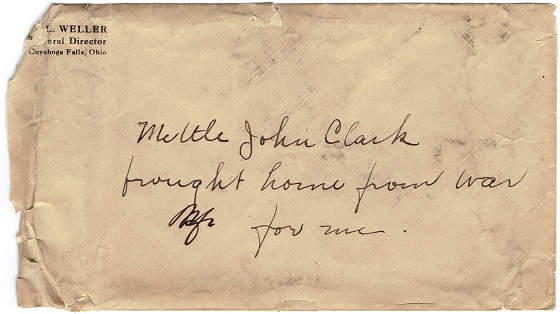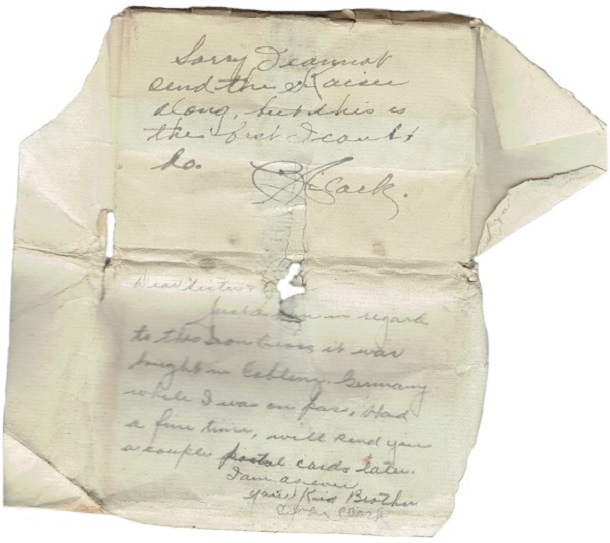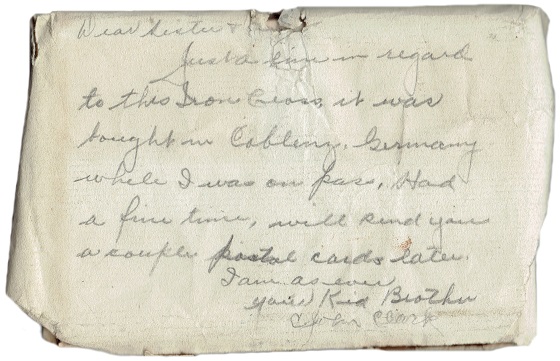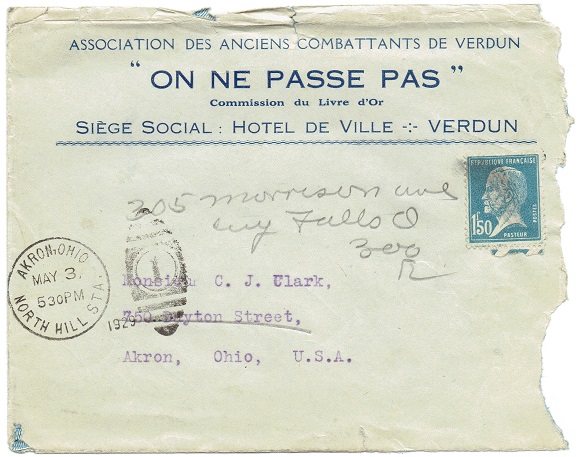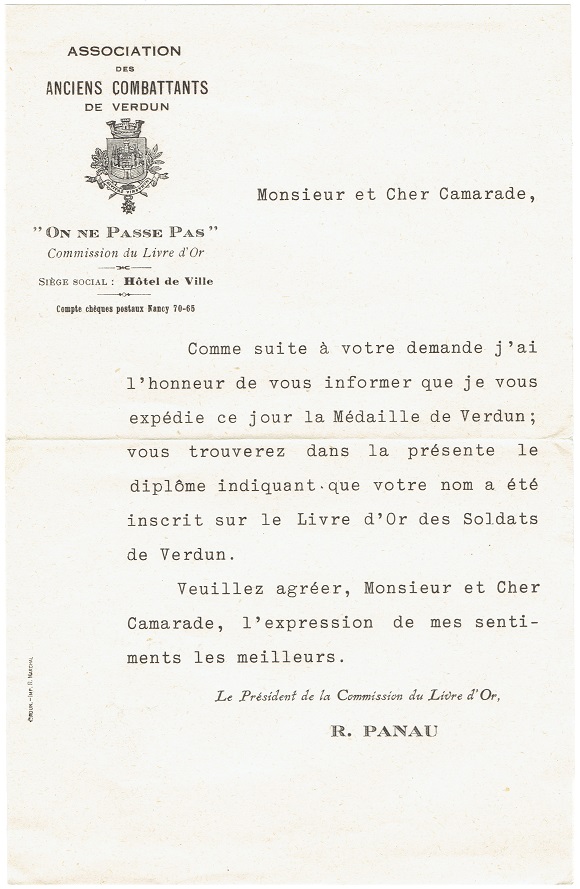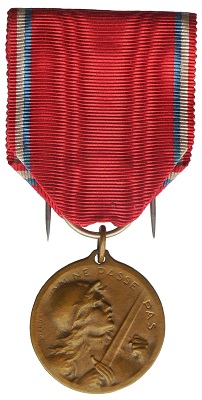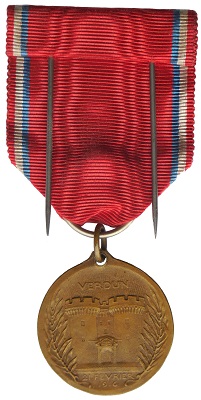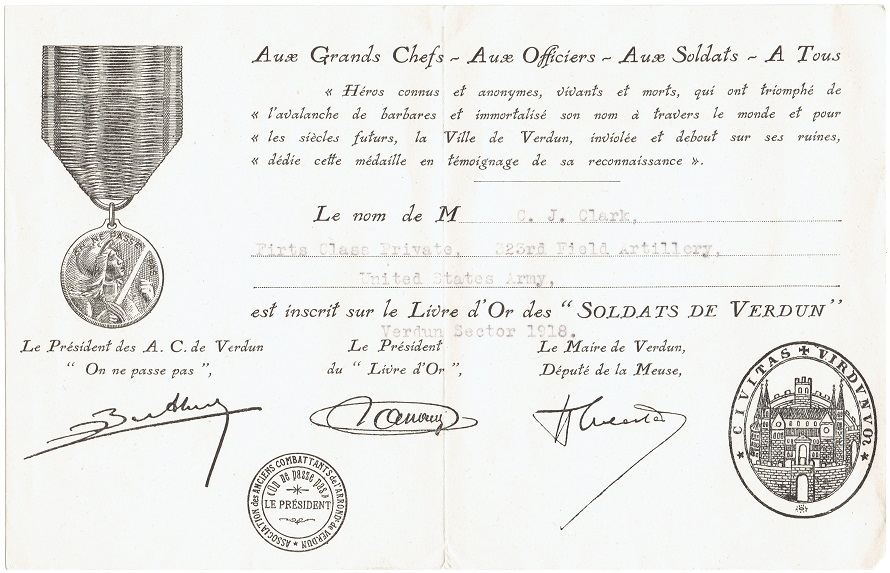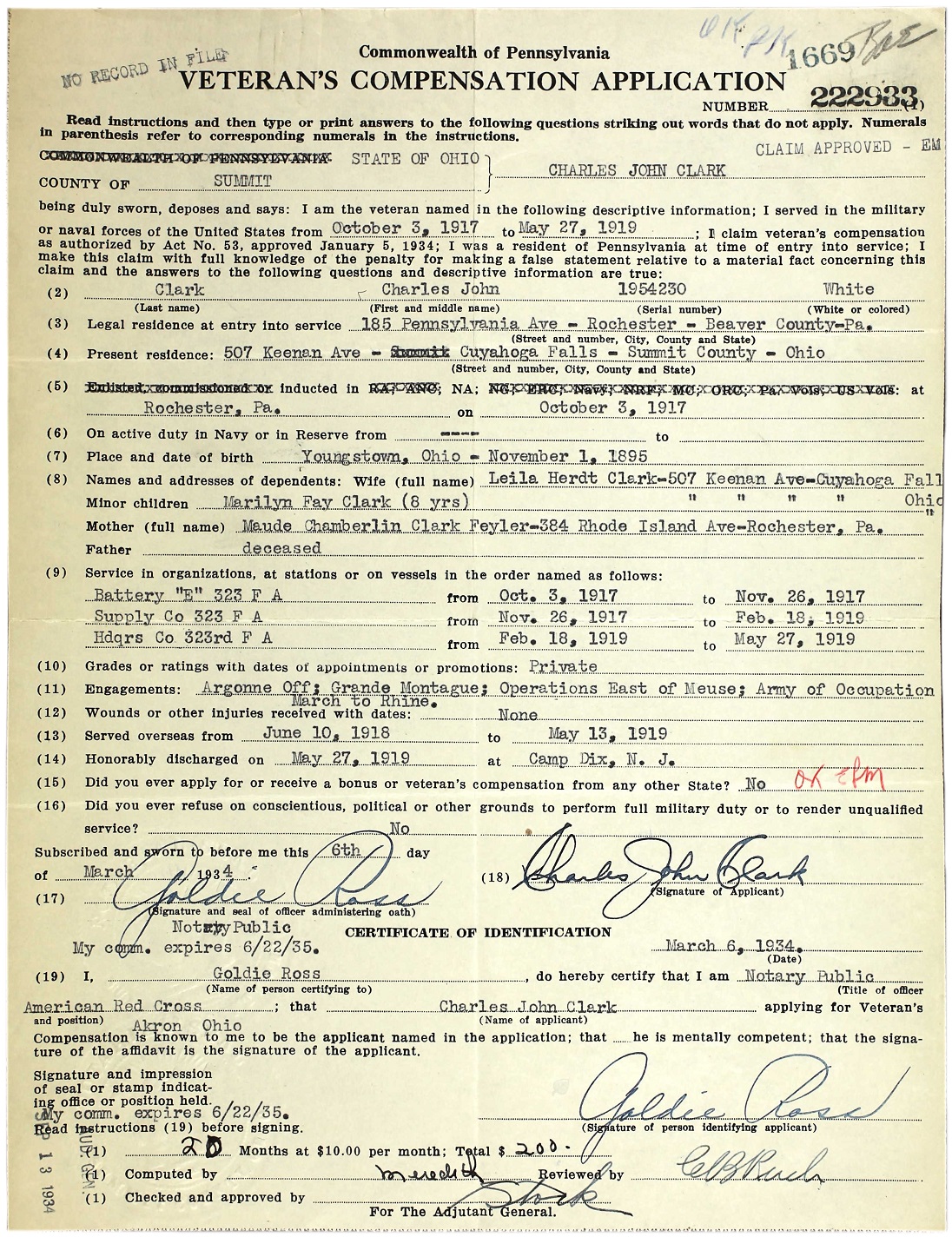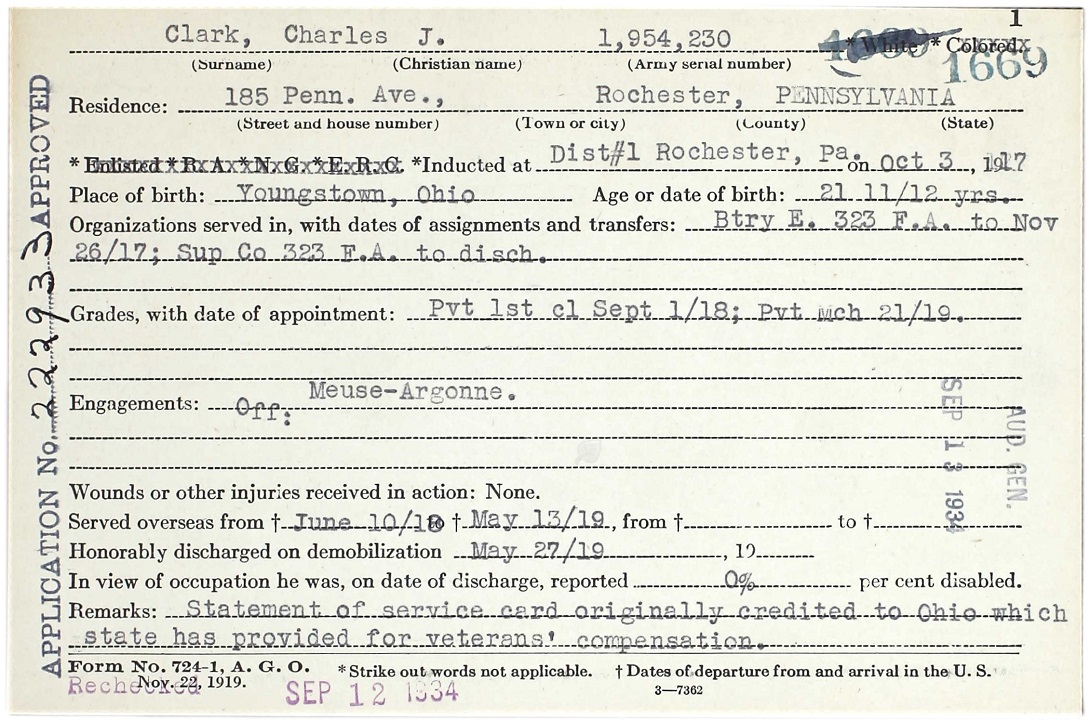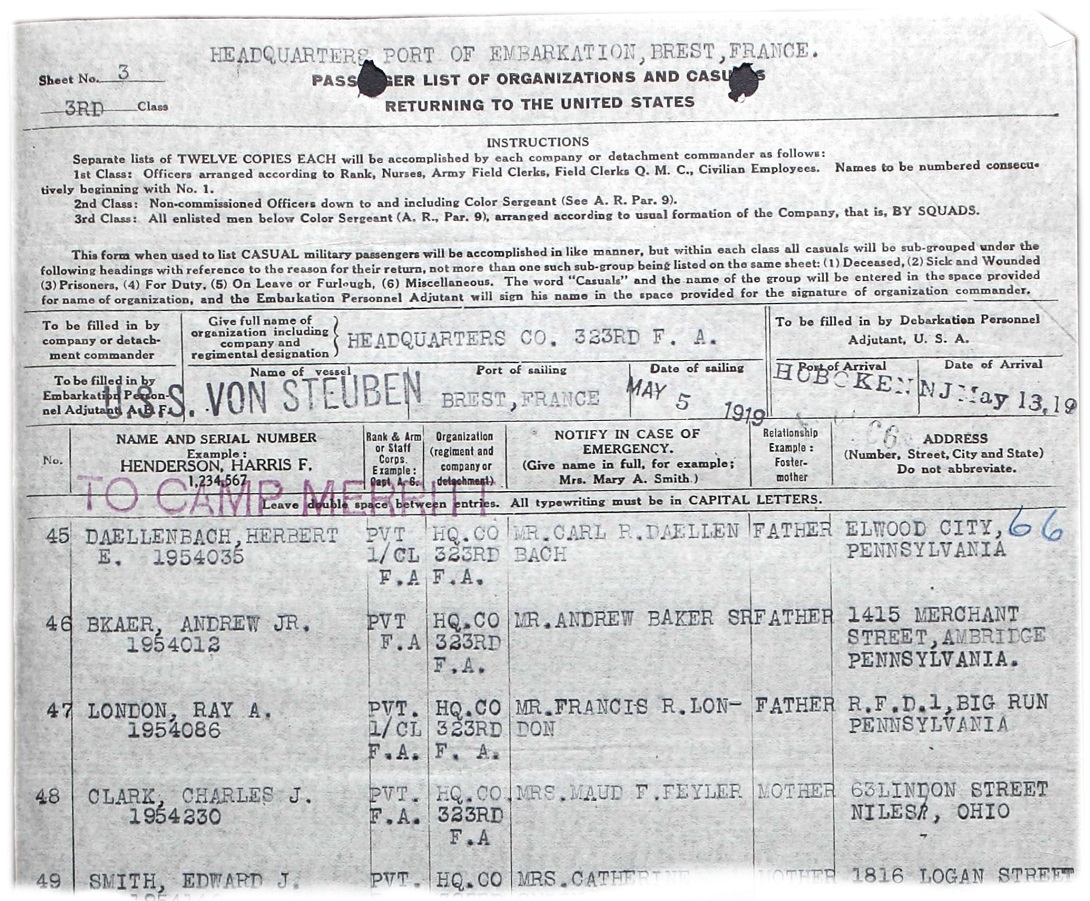''World War One 323rd Field Artillery named grouping''
Original WWI grouping named to Charles J. Clark, a Private First Class of HQ Company, 323rd Field Artillery, AEF which was part of the 83rd Division during World War One. The grouping includes a Verdun medal and certificate, a French croix de guerre and an Iron cross with the original hand-cut box in which it was send home.
The history of the 323rd Regiment of Light Field Artillery begins on August 29, 1917, when seventy-five officers, commissioned at the first Officers' Training Camp at Fort Benjamin Harrison, Ind., reported at Camp Sherman, Chillicothe, Ohio, to form the nucleus around which the Regiment was later organized. According to the plans for the organization of the National Army, this unit was a part of the 158th Field Artillery Brigade, 83rd Division. The latter was under the command of Major General Edwin F. Glenn, who had been at the head of the Officers' Training Camp at Fort Benjamin Harrison.
